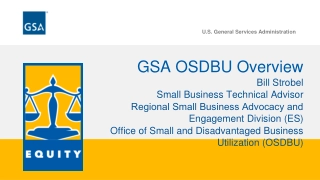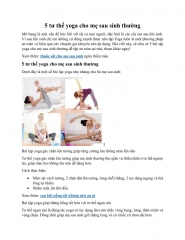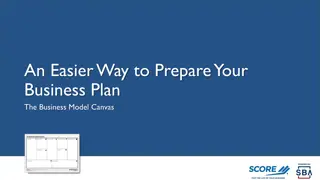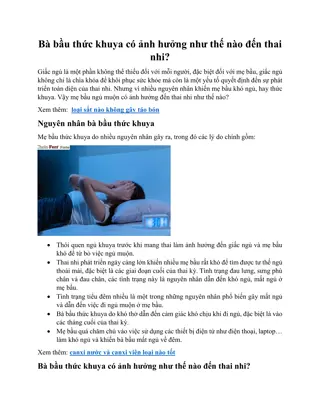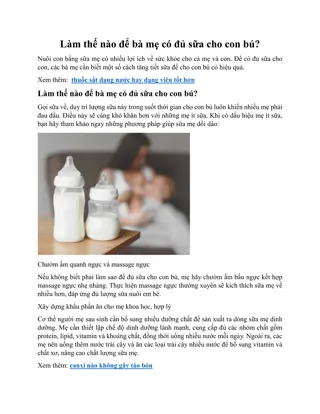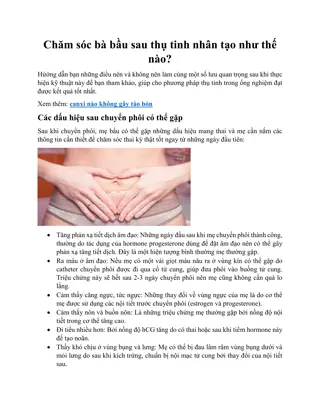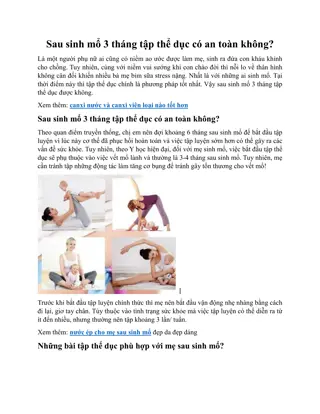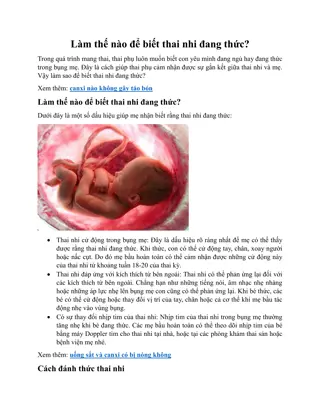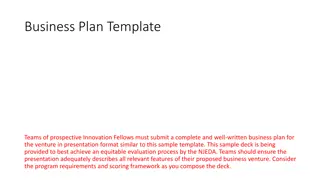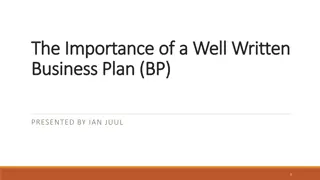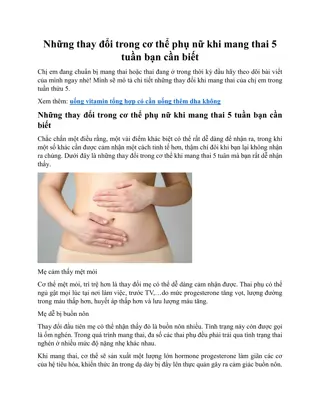
Crafting a One-Page Business Plan for Success
Learn about the importance of a concise one-page business plan, including how it can help make informed decisions, spark creativity, and create a clear action plan. Discover the key steps involved in developing a one-page plan, from defining your mission statement to setting SMART goals and forming action plans for success.
Download Presentation

Please find below an Image/Link to download the presentation.
The content on the website is provided AS IS for your information and personal use only. It may not be sold, licensed, or shared on other websites without obtaining consent from the author. If you encounter any issues during the download, it is possible that the publisher has removed the file from their server.
You are allowed to download the files provided on this website for personal or commercial use, subject to the condition that they are used lawfully. All files are the property of their respective owners.
The content on the website is provided AS IS for your information and personal use only. It may not be sold, licensed, or shared on other websites without obtaining consent from the author.
E N D
Presentation Transcript
THE ONE-PAGE BUSINESS PLAN
What is a One-Page Business Plan? A one-page business plan is a summary of business objectives displayed on a single page.
Why is Having a Business Plan Important? Is a must for most investors, financial institutions and partners Can help you make decisions and eliminate the gray area Can serve as a reality check Can foster new ideas Creates an action plan
Time to Begin Planning! Write your Mission Statement The mission for your business guides everything that you do. Keep it simple by finding the most core denominator that defines your business.
Develop Business Objectives Objectives are general, observable, challenging and untimed directions for your business. They outline what you want the business to look like in the future. Caution! Too many objectives will result in too many priorities to focus on. Stay focused on your Mission Statement. Try to establish at least 4 but no more than 8 objectives.
Create SMART Goals All goals need to share all of these characteristics: Specific Measurable Attainable Rewarding Timed Work on setting goals for one objective at a time. Each objective will have its own set of goals; however, some goals may contribute to more than one objective.
Form an Action Plan Every goal must have action plans that explain how that goal will be accomplished. Action plans (or tactics) are precise and individually itemized plans for action. They describe exactly Who, What, When, Where and How activities will take place in order to accomplish a goal. Action plans detail who will do it, how, where, by when, and how often. Then the key to successful action plans is proper monitoring and comparison to predetermined measurable standards with proper corrective action when necessary.
The 5-Line Income Statement Historical Historical Dollars Dollars % of Sales % of Sales Sales: Sales: $ 100% - -Cost of Goods Sold: Cost of Goods Sold: $ % = Gross Margin: = Gross Margin: $ % - - Overhead Overhead = Profit (Net Income) = Profit (Net Income) $ $ % % Budget resources: http://agalternatives.aers.psu.edu/ https://agecon.uga.edu/extension/budgets.h tml
Sales: Use last year's records as a starting point for your five-line income statement. Historical Dollars % of Sales Sales: $ 100% -Cost of Goods Sold: $ % = Gross Margin: $ % - Overhead $ % = Profit (Net Income) $ %
COGS = Any expense that helps produce one more unit of output. Production labor and associated payroll expenses, including workman's compensation, unemployment taxes, FICA, Medicare, health insurance, crop or livestock inputs: seed, fertilizer, soils, chemicals, feed. Historical Dollars % of Sales Sales: $ 100% -Cost of Goods Sold: $ % = Gross Margin: $ % - Overhead $ % = Profit (Net Income) $ %
Gross Margin: Sales Cost of Goods Sold = Gross Margin Historical Dollars % of Sales Sales: $ 100% -Cost of Goods Sold: $ % = Gross Margin: $ % - Overhead $ % = Profit (Net Income) $ %
Overhead = any expense that you incur no matter how much production you actually have. The main ones are the "DIRTI" Five: Depreciation, Interest, Repairs, Taxes, Insurance Don't forget to include Managers' and Bookkeepers' wages/salaries, marketing, and utilities. Historical Dollars % of Sales Sales: $ 100% -Cost of Goods Sold: $ % = Gross Margin: $ % - Overhead $ % = Profit (Net Income) $ %
Calculate the percent of sales for each line. Divide the dollars for each line by the total sales. Historical Dollars % of Sales Sales: $ 100% -Cost of Goods Sold: $ % = Gross Margin: $ % - Overhead $ % = Profit (Net Income) $ %
Create your budget-from the bottom up. Start with your desired draw (the amount you and your family need to take from the operation to live on, plus income taxes). Add the principal portion of any loan payments you need to make during the year to get the total profit needed from the operation. Budget Owner Draw Desire (include income taxes): Dollars $ (A) Bank principal payments required: TOTAL PROFIT REQUIRED: (A+B) Overhead expenses GROSS MARGIN REQUIRED: (C+D) Divide by Gross Margin percentage (from income statement chart) SALES VOLUME REQUIRED: (E/[F as % of sales- from historical]) $ $ $ $ $ (B) (C) (D) (E) (F) $ (G)
Add your overhead expenses to the required profit to figure the gross margin the operation will need to yield. Your overhead expenses shouldn't change much from the previous year, unless you've undergone a significant expansion or other major change. Budget Owner Draw Desire (include income taxes): Dollars $ (A) Bank principal payments required: TOTAL PROFIT REQUIRED: (A+B) Overhead expenses GROSS MARGIN REQUIRED: (C+D) Divide by Gross Margin percentage (from income statement chart) SALES VOLUME REQUIRED: (E/[F as % of sales- from historical]) $ $ $ $ $ (B) (C) (D) (E) (F) $ (G)
Determine the breakeven sales needed in your operation to support the overhead obligations and profit required. Do this by dividing the gross margin (E) by the gross margin as a percent of sales (taken from your records, calculated in step 3 of the income statement). Budget Owner Draw Desire (include income taxes): Dollars $ (A) Bank principal payments required: TOTAL PROFIT REQUIRED: (A+B) Overhead expenses GROSS MARGIN REQUIRED: (C+D) Divide by Gross Margin percentage (from income statement chart) SALES VOLUME REQUIRED: (E/[F as % of sales- from historical]) $ $ $ $ $ (B) (C) (D) (E) (F) $ (G)
Resources https://newfarmers.usda.gov/make-farm-business-plan www.FarmCreditKnowledgeCenter.com https://agecon.uga.edu/extension/budgets.html https://extension.psu.edu/business-and- operations/business-management/ag-alternatives
FARM CREDIT OF THE VIRGINIAS, KNOWLEDGE CENTER Our Mission: To Facilitate the Sharing of Knowledge and Resources within our Community for the Betterment of ALL Farmers and Those Interested in Agriculture We serve as a One Stop Shop for Valuable Information, Data, Facts and Resources Our team members are Network Agents where we strive to build relationships and make connections. www.farmcreditknowledgecenter.com

